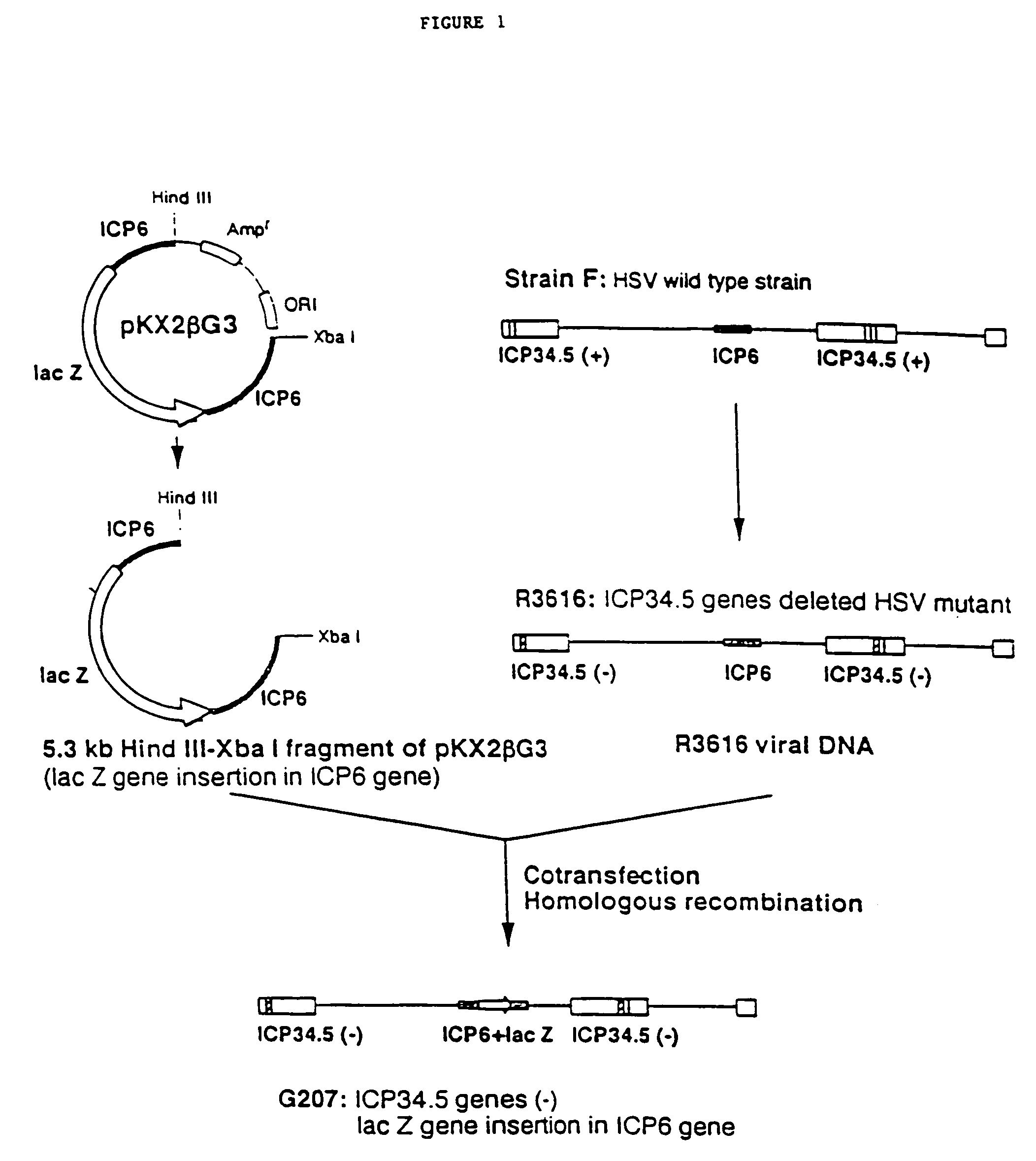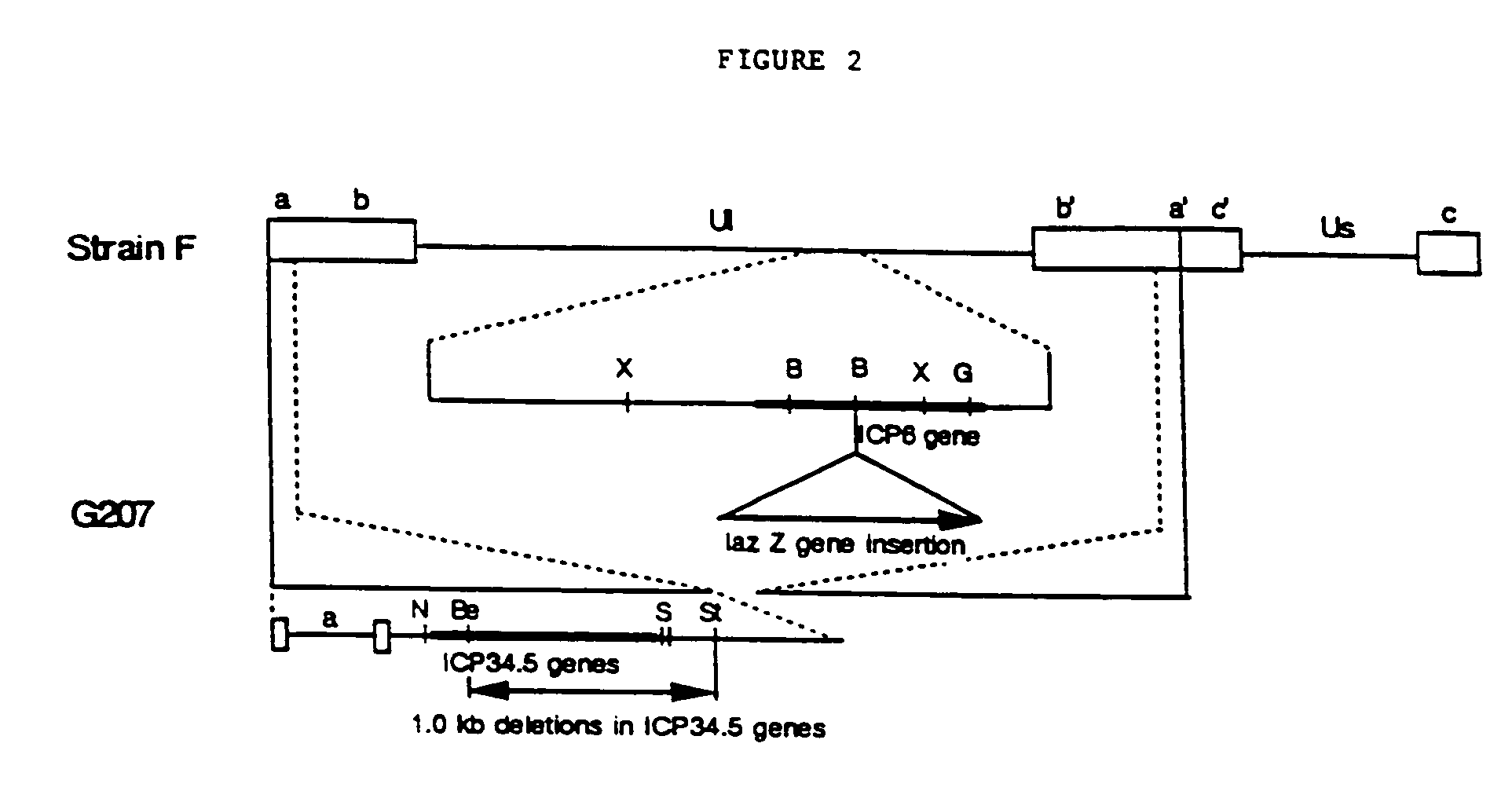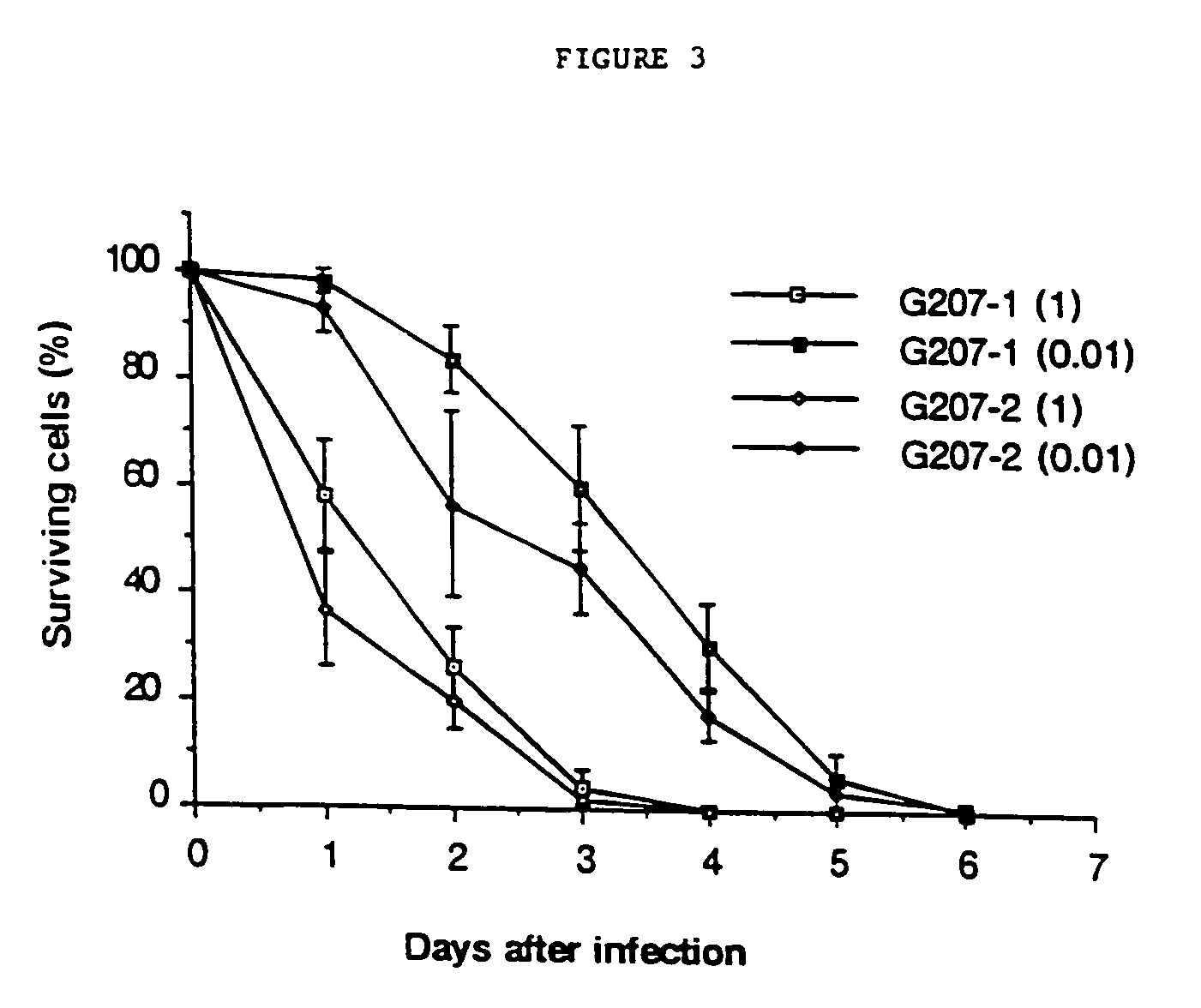Replication-competent herpes simplex virus mediates destruction of neoplastic cells
- Summary
- Abstract
- Description
- Claims
- Application Information
AI Technical Summary
Benefits of technology
Problems solved by technology
Method used
Image
Examples
example 1
Construction of Highly Attenuated, Double HSV Mutants
[0085]Viruses and Cell Lines
[0086]HSV-1 wild-type strain (KOS or Strain F) and HSV mutants (R3616, hrR3) were kindly provided by D. M. Coen, B. Roizman, J. Chou, and S. K. Weller. HSV-1 strain F is available as ATCC VR-733; Vero cells are available as ATCC CRL 1587. R3616, which is derived from HSV-1 strain F, contains a 1-kilobase-pair deletion in both copies of the γ34.5 gene. R3616 was constructed as described in Chou et al., Science 250: 1262 (1990).
[0087]Stocks of viruses were generated in African green monkey kidney cell (Vero) cultures as described. Virus stocks were prepared as described by Coen et al., J. Virol. 53:477 (1985).
[0088]Human glioblastoma cells U-87MG, T98G, U-138MG, and A172 were obtained from American Type Culture Collection (Rockville, Md.) and cultured in Dulbecco's minimal essential medium (DMEM) supplemented with 10% inactivated fetal calf serum (IFCS) and antibiotics.
[0089]Viral DNA is isolated from inf...
example 2
Safety and Efficacy Studies
[0106]The in vitro efficacy of the mutants as anti-glioma agents can be determined using assays of glioma cytotoxicity on cultures of a long-term human glioma cell line, U-87MG, as well as early-passage human glioblastomas. To evaluate tumor inhibition in vivo, subcutaneous U-87MG xenografts in nude mice are treated separately with inoculations of each viral mutant or vehicle, and tumor growth rates were analyzed. To investigate the potential effects of the herpes simplex virus mutant treatment on survival, nude mice with intracranial U-87MG xenografts are treated with virus or vehicle inoculations, and overall survival is compared.
[0107]To evaluate the degree of tumor eradication, as well as the potentially retained neurovirulence of the viruses when used at doses necessary to achieve prolonged survival, the brains of long-term survivors with intracranial xenografts are sectioned, stained, and microscopically examined. For effective in vivo tumor inhibiti...
example 3
In Vivo Extracranial Models
[0123]Subcutaneous Glioma Xenograft Transplantation and Therapy
[0124]The effects of mutant herpes simplex virus infection on human brain tumors in vivo were assessed in athymic mice to allow for growth of the human tumors. Subcutaneous xenograft implantation was performed as previously described. Martuza et al., Science 252:854 (1991) and Markert et. al., Neurosurg. 32:597 (1993). To test the effect of the herpes simplex virus mutants on human glioma in vivo, 1 mm3 minced glioma pieces (obtained from nude mice previously injected subcutaneously with cultured U-87MG cells) are implanted subcutaneously into nude mice. Nude mice are anesthetized with 0.25 ml of a solution consisting of 84% bacteriostatic saline, 10% sodium pentobarbitol (1 mg / ml), and 6% ethyl alcohol. Animals dying within 48 hours of any procedure are considered perioperative deaths and are excluded from analysis. Deaths in the subcutaneous tumor experiments are excluded from analysis (no si...
PUM
| Property | Measurement | Unit |
|---|---|---|
| Immunogenicity | aaaaa | aaaaa |
Abstract
Description
Claims
Application Information
 Login to View More
Login to View More - R&D
- Intellectual Property
- Life Sciences
- Materials
- Tech Scout
- Unparalleled Data Quality
- Higher Quality Content
- 60% Fewer Hallucinations
Browse by: Latest US Patents, China's latest patents, Technical Efficacy Thesaurus, Application Domain, Technology Topic, Popular Technical Reports.
© 2025 PatSnap. All rights reserved.Legal|Privacy policy|Modern Slavery Act Transparency Statement|Sitemap|About US| Contact US: help@patsnap.com



